INDIAN RAMBLE 2011-12
Part 8 Kolkata
Kolkata
The train ride from Gaya conveniently pulled into Kolkata’s vast Howrah station
in late afternoon. Two European travelers and I got a taxi and rumbled across
the 705-meter Howrah Bridge over the Houghly River’s muddy waters. Next our
taxi, a black and yellow Ambassador of a venerable 1950s British design, lurched
through heavy traffic of central Kolkata to Sudder Street, the most popular
traveler’s enclave. I got a discounted room ($8) in the Plaza Hotel, the place
where I had stayed on my last two Kolkata visits, then headed over to the Blue
Sky Cafe for dinner.
Although this was my fifth visit to this Bengali city of about 15 million, I had
not yet visited many of the major sights. One Sunday a taxi took me across the elegant Vidyasagar Setu, a high suspension bridge over the Houghly, to the Botanical
Gardens. In the early days after the garden’s founding in 1786, the British experimented
with tea plants from China before the beverage became popular in this part
of the world. Now botanical research seems to have ended and the gardens
serve as a vast recreation area. I enjoyed strolling the paved paths beneath
giant trees, rows of palms, past clumps of dense bamboo, and along the
west bank of the Houghly River. Small lakes dot the landscape, and the largest
has pedal boats for rent. Many trees have signs with their Latin names, and the
250-year-old banyan tree on the west side of the gardens is the most popular of
all.

Back to nature in the Botanical Gardens
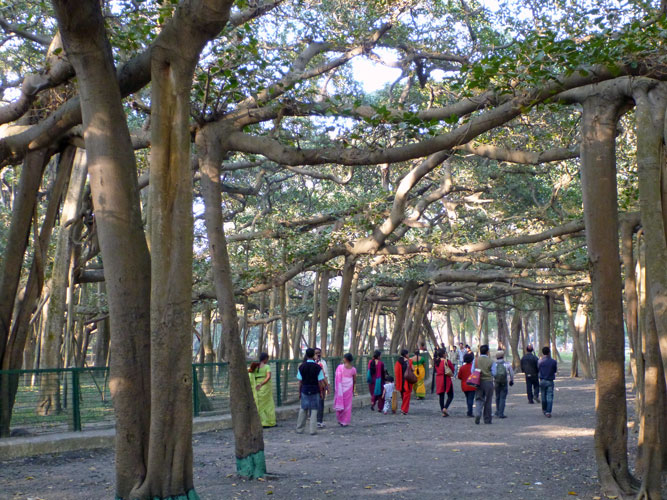
The Great Banyan Tree (Ficus benghalensis) is the most famous sight in
the Botanical Gardens.
Although the central trunk of this 250-year-old tree rotted out and was removed
in 1925,
the 2,880 propagation roots have enabled it to spread out so that it’s now 1.08
kilometers in circumference!

Palm patterns in the Botanical Gardens

Picturesque ruins add character to the Botanical Gardens.

The Hooghly River glides past the Botanical Gardens.
From the Botanical Gardens, I took Bus 55 back on a route that followed the
Grand Trunk Road through Howrah, the part of Kolkata west of the Houghly.
Shophouses hemmed in the busy, traffic-clogged not-so-grand road. A Muslim
section had decorations out for the Prophet Mohammed’s birthday. Finally the bus
turned off on an elevated road past the Howrah train station and headed over the
Howrah Bridge to a terminus at Esplanade near the center. Sundays make for the
most pleasant travel through Kolkata as traffic tends to be light; on other days
traffic jams can make travel through the center very tedious.
A bit farther south, I caught the last night of the three-day Sufi Sutra
Festival, held at an outdoor stage on Cathedral Road, across from the Academy of
Fine Arts. First a large group from Egypt performed, followed by a smaller
ensemble from Kashmir. Lastly, musicians from all eight groups (Egypt, Hungary,
Syria, Morocco, Azerbaijan, Denmark, Kashmir and West Bengal) joined together
for rousing songs.
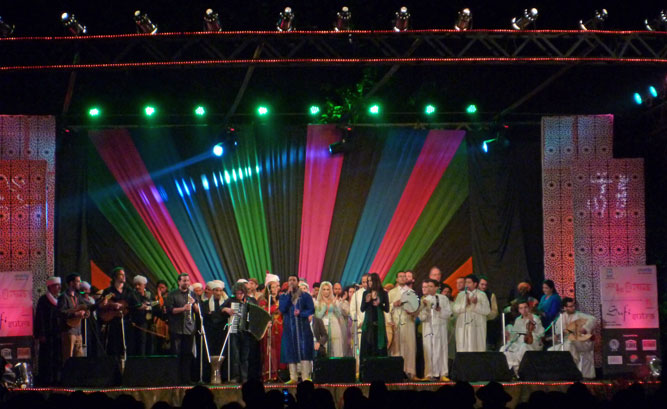
Sufi musicians of many nationalities assemble for the final songs of the three-day
Sufi Sutra Festival.
Kolkata’s top sight has to be the Victoria Memorial, not so much for the memory
of the queen
herself, but the beauty of the white marble building and the wealth of history
and art inside. Exhibits use early paintings and drawings to tell the story of
Kolkata’s beginnings as a trading post, then growth into a great city and
capital of British India and finally the rise of Bengali artists, thinkers, and
leaders. Except for the odd statue of Victoria and other British royals, there’s
very little about the queen unless one looks up inside the central dome to
see murals of major events in her life. The museum has a strict NO PHOTOGRAPHY rule
inside, but I enjoyed a stroll in the surrounding gardens for different
perspectives and photos of the building.
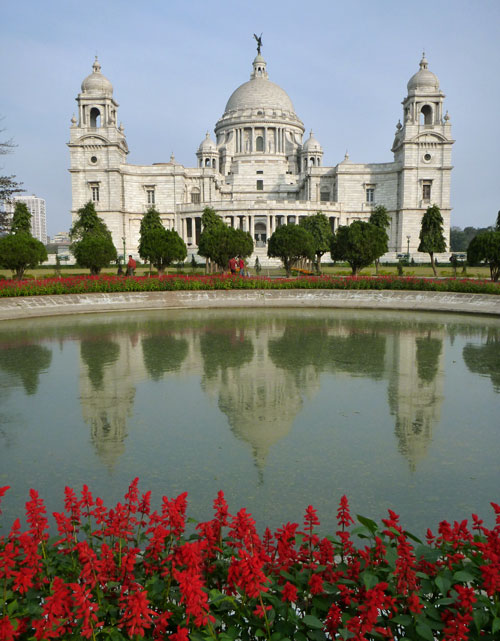
The Victoria Memorial, crowned by the Angel of Victory, is one of India’s
prettiest buildings.
Lord Curzon conceived and promoted the idea of a memorial in 1901, and the
queen’s grandson,
the Prince of Wales (later King George V), laid the foundation stone five
years later. It opened in 1921.
East across Cathedral Road from the memorial, I dropped into St. Paul’s
Cathedral to admire the spacious interior and read some of the memorials of
gallant soldiers and notable citizenry. Again, no photos allowed inside, so
you’ll have to go and see for yourself. Just south of the cathedral is a cluster
of theaters where I caught some Bengali music. I later returned a couple times
to see the varied contemporary painting and photography exhibits at the Academy
of Fine Arts.
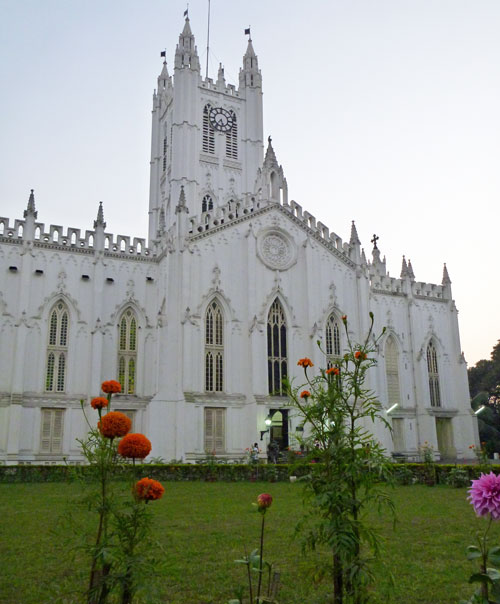
The 1847 St. Paul’s Cathedral has many memorials inside from the British era.
One morning I headed to the north side of town, burrowing underground on the
Metro to avoid sluggish surface traffic, to the 1914 Digambar Jain Mandir. White
marble, gilt, and brightly colored paintings filled the interior. Luckily I was
able to take some photos, see below.

Gardens surround the Digambar Jain Mandir in north Kolkata.
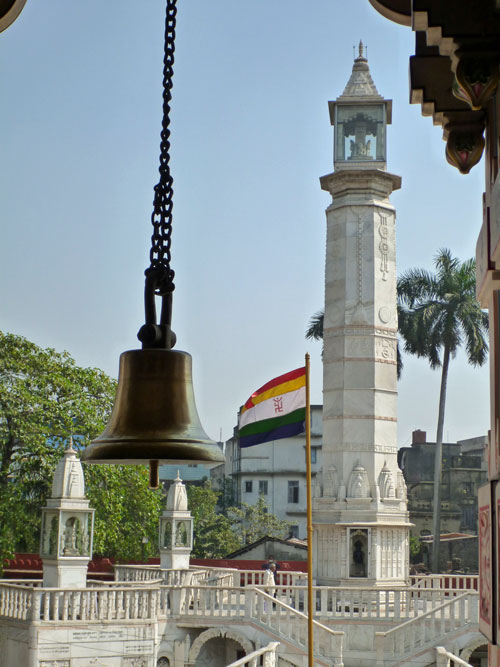
This curious lighthouse-like tower stands in front of the temple entrance.
Statues of Jain saints face the four directions from the enclosures.

Jain saints in one of the shorter towers. They are “sky-clad.”

The main shrine in the temple’s dazzling interior honors the 23rd tirthankara,
Parswanath (877-777 B.C.).

This painting high on the wall in the Jain temple caught my eye because of its
similarity to the story of the Buddha’s
conception, when his mother dreamed of a white elephant. Both Jain and Buddhist
religions began about 2600 years ago.
On another day, I visited a trio of Jain temples clustered close together. Why
three temples of the same religion were built in the same neighborhood, I don’t
know, but each temple has a very different architectural style from its
neighbors. I first went into the mirrored interior of the 1867 Sheetalnathji
Jain Mandir, decorated on the outside with curious spires that are reminiscent
of idiosyncratic Spanish architect Antonio Gaudi. The temple honors Bhagavan
Sheetalnathji, the 10th tirthankara.
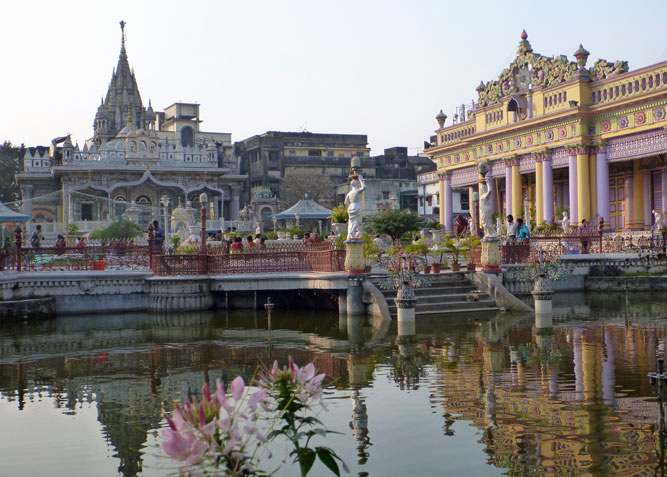
The gardens in front of Sheetalnathji Jain Mandir (left) are a popular evening
gathering spot.
That’s a guesthouse on the right.

This man has gotten into a tight spot.
Glass and tile work decorate the temple’s
interior and exterior.
Just to the east, I walked through a well-decorated gate to the 1810 Dadaji Jain
Mandir, which my guidebook described as sedate, but today was jumping to wedding
music. Guests filled the covered courtyard with men and women sitting on
separate sides, chatting, and listening to the music. Sundays are the time for
Jain weddings, I was told. Lastly, I entered the adjacent Sri Sri Channa Probhuji Mandir
to see its well-decorated interior.

Across a lane, this grand gate leads to Dadaji Jain Mandir, oddly shaped like a
tomb.

But the temple certainly didn’t have a tomb-like atmosphere. It was rocking to
wedding music!
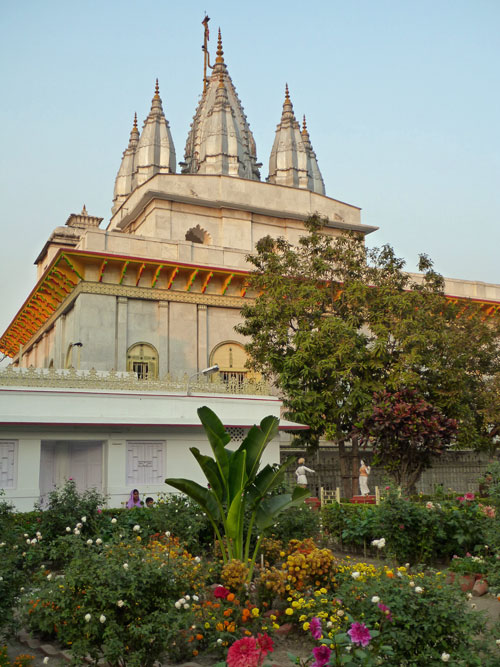
Next door, the Sri Sri Channa Probhuji Mandir was peaceful and nearly deserted.
Also hidden away in north part of town, I searched out the Ashutosh Museum of
Indian Art in the Kolkata University campus to see the ancient stone
sculpture, bronzes, and Bengali folk art on two floors.
Besides sightseeing, I had the business to attend to of getting a visa for
Thailand. Indians like to visit Bangkok and Phuket on holidays, but seem to face
greater scrutiny than Western nationalities by Thai consular officials. I headed
over to the Thai consulate on the southeast side of Kolkata, filled out the
form, wrote a letter requesting a tourist visa, assured staff that I had
sufficient funds in credit cards, ATM cards, and travelers checks, and gave
copies of my tickets in and out of Thailand. The application process took more
than an hour, and I was relieved when everything was accepted and I was told to
come back the next morning. The visa cost a stiff $40, but would allow the 60
days that I wished.
Near the Thai consulate, I visited CIMA (Centre for International Modern Art) to
see the lively and varied contemporary art. Some of the art looked familiar
because CIMA had a show that I had seen in New Delhi a couple weeks earlier. The
friendly museum director told me about hidden meanings in some of the paintings
and sculptures and her thoughts on pieces that the artists were mum about. She
also recommended several Bengali restaurants in the area, so I set out to the
nearby 6 Ballygunge Place, which was both the name and address of a restored
mansion. Bengali food has a very different flavor from other Indian cuisines, and I
didn’t recognize any of the names of the dishes. Bengalis tend not to be
vegetarians, but they do love vegetables. The restaurant had six main
dishes out on the buffet table, three vegetarian and three non-veg., along with
rice, chutney, and sweets. When I told staff that I preferred vegetarian food,
they brought out three additional vegetarian dishes. The food was good despite
the unfamiliar flavors.
Sometimes local artists open their studios to the public, and I got to visit two
of their shows. A woman artist, who specialized in stylized portraits with
unexpected colors, displayed her show in rooms of her contemporary home/studio
in a very nice part of the city near the Birla Mandir; she and a friend invited
me for tea and a chat. I dropped by the very personal exhibit Night Watch,
appropriately at night, to see two floors of very strange things in an old
mansion; big steel boxes had shutters that slowly opened and closed to reveal
scenes of forest leaves on the ground; another room had eerie semi-abstract
nature photos dangling near the floor from long strings; video exhibits were
just as bizarre with strange slow moving scenes taken in gardens and forests.
The late-20th-century Birla Mandir temple, just south of CIMA, honors all the
Hindu gods, but the highest tower shelters sweet images of flute-playing Krishna
and his devoted consort Radha. Around the corner on the south side of the
temple, I descended into the GD Birla Sabhagar, a theater underneath the temple
for fine performances of Hindustani classical music in a three-day festival.
Each day had a double feature.

Lord Krishna and his consort Radha reside under the highest tower of the
Birla Mandir.

In an auditorium underneath the Birla Mandir, Kaushiki Chakrabarty sings
beautiful songs. Samar Saha plays
tabla on the left and Rupashree Bhattacharya is on the harmonium (a hand-pumped
keyboard) on the right.
The long-necked tampura have only three strings and provide a background drone.
On another day, more art—I strolled along the north shore of Rabindra Sarovar on
the south side of Kolkata and crossed a field to the Birla Academy of Art &
Culture. This large museum has some of everything, and I most enjoyed the
well-displayed ancient stone sculptures and miniature paintings. Much of the
modern art looked faded and had less appeal, though some pieces were intriguing. Local
student artists also had an exhibition of paintings.
Also in the south, I visited the famous Kali Temple at Kalighat. Before reaching
the temple, a guide “adopted” me and swept me inside past a long line of
devotees to the main image of Kali, a black face with three big eyes and
protruding red tongue. Her incarnation here is believed to be blood thirsty, and
an unfortunate goat just outside the main temple was beheaded with a single stroke
of a large knife. I was told that in the main annual festival a buffalo would be
sacrificed here. Meat from sacrifices is then cooked and served to devotees in
the afternoon. As is usual for Hindu temples, lots of shops in and around the
temple compound sell red powder (Kali’s favorite color) and all sorts of
trinkets, fruit, and sweets to offer to Kali. My guide pulled out a (fake)
donation book and suggested that I make a huge donation to the temple as other
foreigners had done before, but this is an old scam and I was generous to give a
small donation to the temple.

The Kali temple at Kalighat is the most sacred place for Hindus of Kolkata and
may have been the source of the city’s name.
Tilework decorates the interior and exterior of the current building, which
dates from 1809.
This is the temple tank for washing, and the higher
level is a gathering spot for devotees to take an afternoon meal.

This boy’s hair will be offered to Kali. I was told that the woman had earlier
come to the temple for
a blessing to have a child, and now she was returning in gratitude with her son
to make the offering.
From Kalighat I walked past a very picturesque old jail from the early 20th
century, but was afraid to take a photo of it as Indians are very touchy about
security. I stopped for a quick look at the National Library, then found my way
to the Horticultural Gardens. Here, compared with the Botanical Gardens, the
emphasis is on flowers and small plants, though a few old trees towered high
above. I was lucky to time my visit with the Annual Flower Show, a huge event. Indoor exhibits featured floral arrangements including a tableau of scenes from Krishna stories depicted in flowers. The vast bonsai
display area had many very ancient looking yet very tiny trees; miniature banyan
trees were especially popular here. Outdoor displays had cacti, succulents,
roses, and exceedingly colorful displays of ornamental arrangements.

Colors of the Annual Flower Show, sponsored by the Agri-Horticultural Society of
India
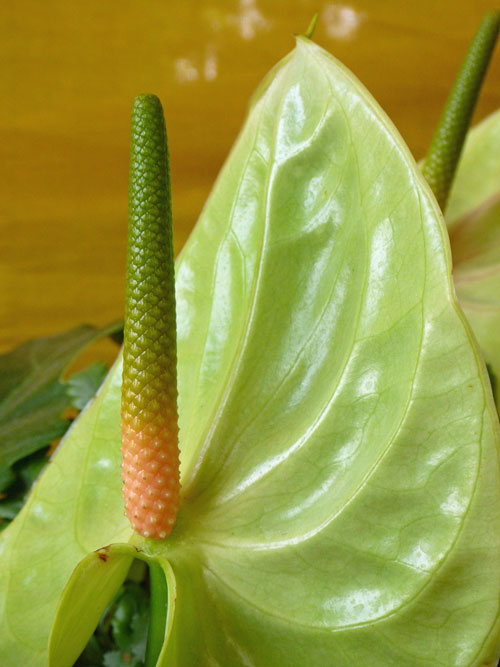
Anthuriums came in a rainbow of colors at the Flower Show. The name comes from
Greek anthos (flower) + oura (tail).
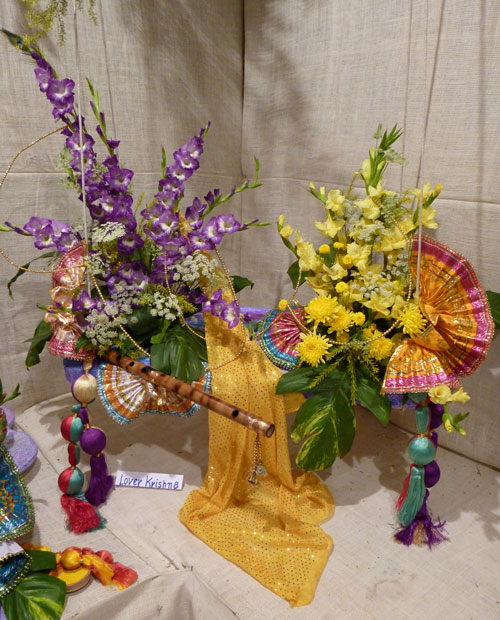
A scene from the Floral Drama, Lord Krishna, at the Flower Show

Orchids were showiest of all, of course. Sexy too, as the name is
based on the Greek orkhis (testicle, in reference to the shape of its
tuber)!
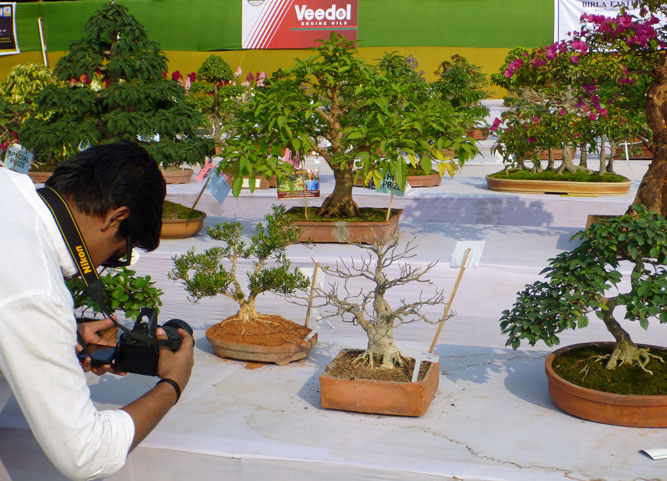
Photographers fluttered around the bonsai.
Finally, after 12 days in Kolkata, it was time to leave. Weather had been
delightful with sunshine and near-perfect temperatures until my last day when
light rains fell. Also on the last day, breathing the city’s dirty air had given
me a slight cold and I had picked up an intestinal infection. An old taxi took
me on the slow ride weaving around dense traffic and potholes to the airport,
where I checked in for my Air Asia flight. One of these days the authorities
will replace the dilapidated international terminal, but it’s far quieter and
less crowded than one would expect at one of India’s largest cities.
Back to the Beginning of Indian Ramble
On to Thailand Ramble


























